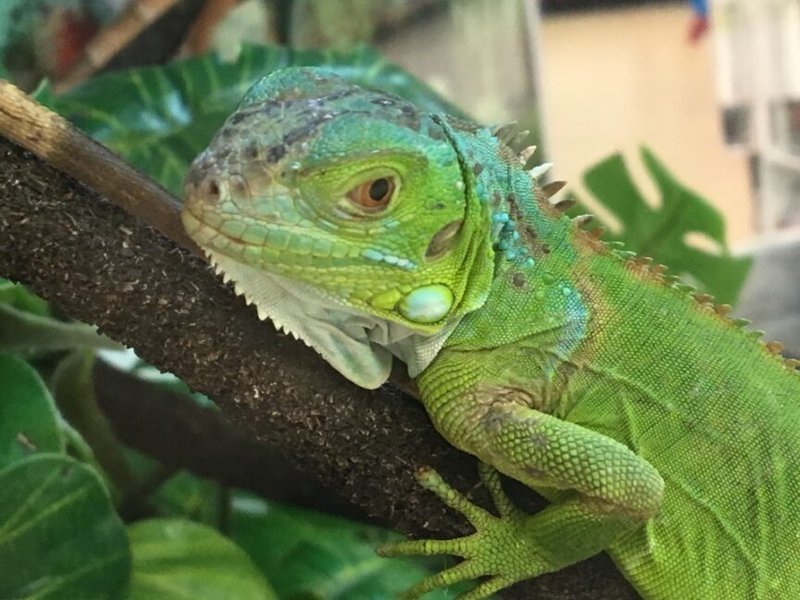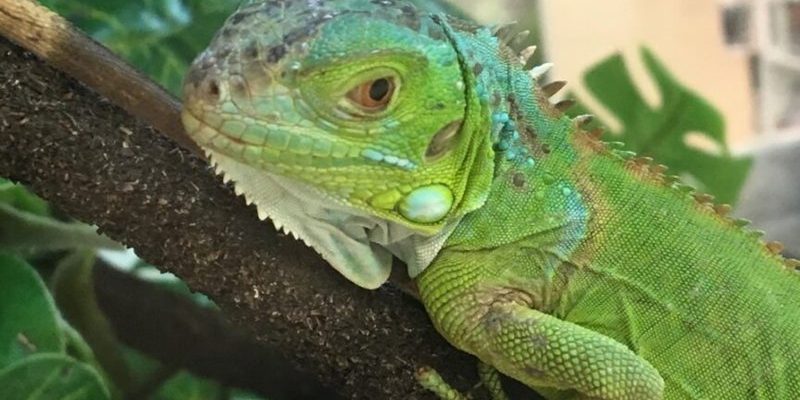
So, how do you go about identifying a green iguana in the wild? Think of it like a treasure hunt where the treasure is a beautiful lizard with a personality all its own. It isn’t complicated, but a bit of knowledge goes a long way. By learning a few key characteristics, you’ll impress your friends next time you’re out exploring the outdoors.
What Does a Green Iguana Look Like?
When identifying a green iguana, the first thing you’ll notice is their vibrant green color. However, it’s worth noting that not all green iguanas display the same shade. They can range from bright lime to a more muted olive hue, especially in older individuals. Some even develop patterns as they age.
Physical Features:
– Size: Adult green iguanas can grow quite large, often reaching lengths of 4 to 6 feet, including their tail. So, if you spot something sizable perched on a branch, there’s a good chance it’s an iguana.
– Head and Body: They have a distinct triangular head and a long body with a crested back, which features spines running down their neck and back.
– Tail: Their tail is long and often accounts for about two-thirds of their total length. It’s not just for show; iguanas use it for balance and agility as they navigate trees.
Here’s a fun fact: the color of a green iguana can change slightly based on their mood, temperature, and even stress levels. So, if you see one basking in the sun, it might appear more vibrant than one hiding in the shade.
Where to Find Green Iguanas
Green iguanas are native to Central and South America and the Caribbean, and they thrive in tropical rainforests. However, they’ve also adapted well to urban settings. You might find them lounging in backyards or parks, especially in warm climates.
Common Habitats:
– Trees: These lizards are excellent climbers, often found resting on high branches where they bask in the sun and stay safe from potential predators.
– Near Water: Green iguanas love to be close to water sources. If you’re near a river, lake, or beach, keep your eyes peeled! They’re known to take a dip when the heat gets too intense.
If you’re venturing into their territory, remember to move slowly and quietly. They’re skittish creatures and will dart away if they feel threatened.
Behavior and Movement Patterns
If you’ve got your binoculars ready and you’re trying to identify a green iguana, pay attention to its behavior. These lizards are more than just pretty faces; they have some interesting habits that can give away their identity.
Basking:
You might see a green iguana spread out on a branch, soaking up the sun. This is called basking, and it’s an essential part of their daily routine to regulate their body temperature.
Foraging:
They’re herbivores, primarily feeding on leaves, flowers, and fruit. If you’re near a source of fresh vegetation and spot a green iguana, it’s likely looking for a snack.
Social Interactions:
During mating season, male iguanas can become more territorial. They’ll often display head-bobbing and vocalizations to assert dominance. So, if you hear what sounds like a low grunt or see them bobbing their heads, you’re likely witnessing some iguana drama!
Distinguishing Features from Other Iguanas
There are several types of iguanas, and while green iguanas are the most recognizable, it’s helpful to know how to distinguish them from others in the wild.
Comparison with Other Species:
– Black Iguanas: Unlike green iguanas, black iguanas are typically darker and bulkier, often with more robust bodies.
– Spiny-Tailed Iguanas: These are usually smaller and have distinctive spines along their tails, making them look quite different.
Each species has unique markings and body shapes. If you come across something that seems like a green iguana but has color variations or unique characteristics, take a moment to compare.
What Sounds Do Green Iguanas Make?
Another interesting aspect of identifying green iguanas is the sounds they make. While they’re not particularly vocal, they do have certain noises that can help you recognize them.
Key Sounds:
– Hissing: If they feel threatened, iguanas may hiss to warn off potential predators or intruders.
– Low Grunts: Typically heard during mating season, these can sound almost like a low rumble.
Familiarizing yourself with these sounds can enhance your wildlife experience and help you understand iguana behavior better.
Why Identifying Green Iguanas Matters
Being able to identify green iguanas isn’t just a fun fact to share; it’s also important for conservation. Understanding the presence of green iguanas in the wild can help gauge the health of their ecosystem.
Conservation Awareness:
– Ecosystem Role: Green iguanas play a role in their environment by aiding in seed dispersal as they munch on fruits.
– Threats: They face threats from habitat loss and hunting, making awareness about their existence crucial.
By learning to spot them in the wild, you can advocate for their protection and contribute to the preservation of their habitats.
Tips for Spotting Green Iguanas
Now that you’re armed with knowledge, let’s talk about some practical tips for spotting green iguanas in the wild.
Best Practices:
– Go Early or Late: These lizards are often more active during cooler parts of the day. Early mornings or late afternoons are ideal times to spot them.
– Use Binoculars: If you have a pair, binoculars can help you spot them from a distance without disturbing their habitat.
– Stay Silent: Remember, iguanas are easily scared. Move slowly and quietly to increase your chances of a sighting.
By following these tips, you’ll be on your way to becoming a green iguana spotting pro in no time!
In closing, identifying a green iguana in the wild can be a rewarding experience. With a little knowledge about their appearance, behavior, and habitat, you’re all set to embark on your own adventure. Whether you’re hiking through the tropics or exploring local parks, keep your eyes peeled for these fascinating creatures. Happy spotting!

